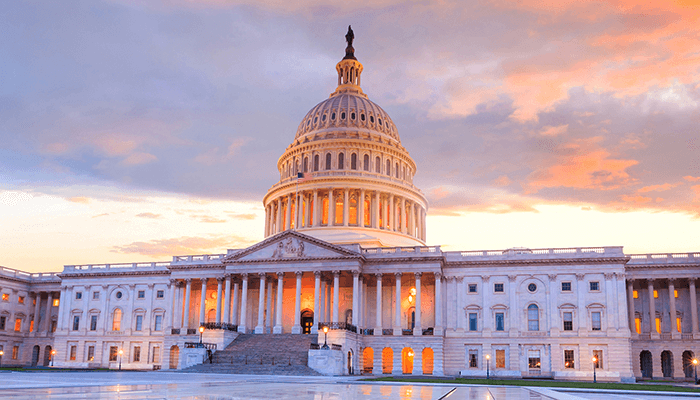The House Should Hold the Line on Deficit Reduction
The House will reportedly bring the Senate’s Fiscal Year (FY) 2025 concurrent budget resolution to the floor for a vote this week. The budget includes reconciliation instructions for the Senate to write legislation to add $5.8 trillion to deficits through FY 2034, requiring just $4 billion in enforceable savings targets, and allowing permanent extension of the expiring provisions of the Tax Cuts and Jobs Act through the “current policy” gimmick. If enacted, such legislation would double the growth of the national debt and allow for $45 to $60 trillion of new debt over the next 30 years.
The House’s reconciliation instructions allow for $2.8 trillion in net deficit increases through FY 2034 through a combination of $4.8 trillion of deficit increases and $2 trillion of savings.
The Senate instructions can only be waived by a 60-vote threshold and thus are in practice the binding mechanism.
The following is a statement from Maya MacGuineas, president of the Committee for a Responsible Federal Budget:
The Senate has passed one, big, debt-exploding budget – full of egregious deficit increases, an embarrassingly low level of savings, and several gimmicks that threaten to upend the budget process as we know it. Rather than capitulate to an unprecedented level of fiscal recklessness from their Senate colleagues, the House should hold firm on requiring at least the $2 trillion of savings in their instructions. We most certainly hope they push for more.
To be clear, neither chamber is requiring the necessary savings to offset their tax cuts and spending increases – in fact, both have a long way to go before they can be considered anything other than irresponsible. But the House, which put in the work of agreeing to $2 trillion of savings with $1.5 trillion specified by committee, is about to be jammed by the Senate with a far more reckless budget allowing for more than twice the deficits and almost none of the savings.
There is already substantial pressure mounting on fiscal hawks to bend to political expediency. The Senate’s excuses – that they need flexibility, that this is just a step to unlock the process, that they promise they will come up with trillions of spending cuts – don’t hold water. And their use of the egregious “current policy” gimmick should show plainly to every fiscal hawk that they have no intention of actually coming up with the savings necessary to prevent this bill from adding significantly to deficits.
In reconciliation, it is the Senate’s rules that are binding. It’s the Senate, not the House, that is trying to avoid a filibuster, so the House needs to take note that at the end of the day, the Senate instructions are what to pay attention to when it comes to the fiscal impact of the final bill.
Paying for your priorities – including tax cut extensions, new tax cuts, and spending increases – is hard, and it requires tough tradeoffs to do so without adding to the debt. The Senate’s approach is to completely abandon any effort at finding actual offsets and just hope that Congress caves to pressure from party leadership, the White House, and self-imposed deadlines. But there is so much more needed to prevent this from becoming a debt bomb, and now is the time for Members to demonstrate their political courage.
###
For more information, please contact Matt Klucher, Assistant Director of Media Relations, at klucher@crfb.org.

